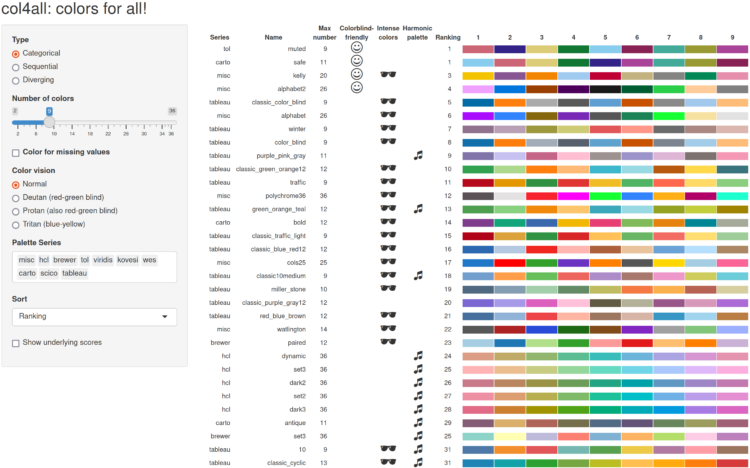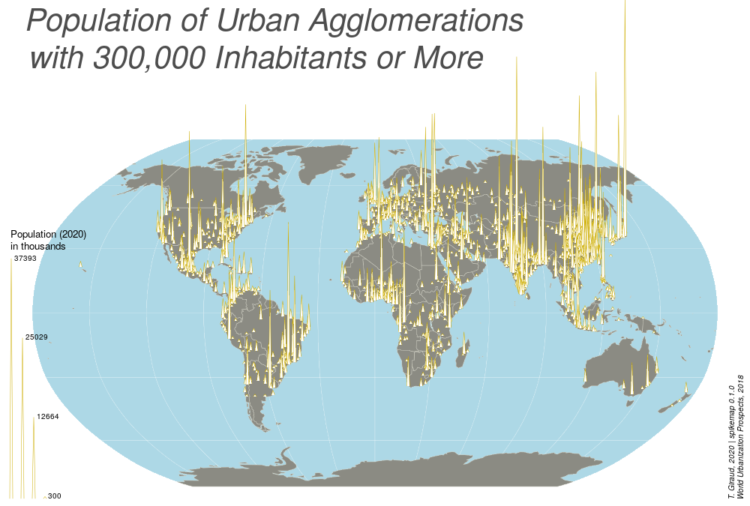
If you use color as a visual encoding, you should make sure every one can actually see the differences in your scale. The cols4All package from Martijn Tennekes can help by ranking and categorizing a wide set of color schemes.
Color palettes are well organized and made consistent with each other. Moreover, they are scored on several aspects: color-blind-friendliness, the presence of intense colors (which should be avoided), the overall aesthetic harmony, and how many different hues are used. Finally, for each color palette a color for missing values is assigned, which is especially important for spatial data visualization. Currently we support three types: categorical (qualitative) palettes, sequential palettes, and diverging palettes. In the near future, more palette types will be added, such as cyclic, bivariate, and hierarchical.
Tags: color, Martijn Tennekes, package, R



